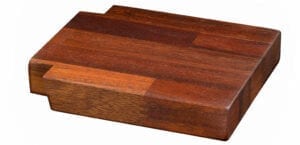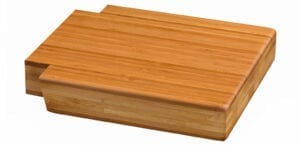Asia
HMT buys a number of wood species from Asia. We have a clear and unequivocal requirement of FSC® certification, or another form of assurance that the forest and the local environment are treated in a responsible manner. Get an offerAsien
In southern Japan and the southern part of central China, the deciduous forests merge with species-rich, evergreen forests containing species from the Lauraceae (laurel), Theaceae (tea), Magnoliaceae (magnolia) and Hammamelidaceae (witch hazel) families. Among the gymnosperms, there are some peculiar “living fossils”: Ginkgo (temple trees) and Metasequoia (dawn redwoods). Bamboo species can dominate locally. In the eastern Himalayas (Sikkim), the mountain rainforest grows at altitudes of between around 900 and 2000 m; it contains both tropical elements, such as screw palms and bamboo, and northern temperate genera such as Castanopsis and Lithocarpus (from the beech family). The rainforest is replaced by a coniferous forest zone and, in the cloud zone (approx. 2600 to 4000 m), by rhododendron thicket.
Large parts of Southeast Asia are covered by rainforests and monsoon forests, which are some of the Earth’s most species-rich vegetation types. Important families are screw palms, the ginger family, the Dipterocarpus family and the fig family. In dryer areas, such as inner Burma, the forests are deciduous and home to teak, among other species. In the Philippines and New Guinea there is a certain Australian element, such as Casuarina (Lophira Alata) and Eucalyptus. On high mountains there are also species from the genera that usually occur in the northern temperate regions, such as Ranunculus and star.
HMT buys a number of wood species from Asia. We have a clear and unequivocal requirement of FSC® certification, or another form of assurance that the forest and the local environment are treated in a responsible manner.
Wood Species

Bamboo
Bamboo comes from tropical humid areas in East Asia. Bamboo is an umbrella term for lignified grasses from tropical regions. It covers some 1,000 species, but we use the genus Mao Zhu, which primarily comes from the province of Fujian.
4000 x 625 x 30/40 mm. Fine pore structure and extremely durable. Light natural and carbonised (brown caramel). Vertically glued – front and back. So there is no difference in a bridge solution, where the leg/legs is/are visible from both sides.
The inlay is longitudinal, so the front edge appears as a continuous stave. The worktops can be glued together in the usual way for wider worktops – bridge solutions, for example. FSC® certified available.
Hardness: Janka 730, i.e. hard wood
Weight: 750 to 850 kg/m3 at 8% humidity
Product types:

Bamboo, carbonised
Bamboo comes from tropical humid areas in East Asia. Bamboo is an umbrella term for lignified grasses from tropical regions. It covers some 1,000 species, but we use the genus Mao Zhu, which primarily comes from the province of Fujian.
4000 x 625 x 30/40 mm. Fine pore structure and extremely durable. Light natural and carbonised (brown caramel). Vertically glued – front and back. So there is no difference in a bridge solution, where the leg/legs is/are visible from both sides.
The inlay is longitudinal, so the front edge appears as a continuous stave. The worktops can be glued together in the usual way for wider worktops – bridge solutions, for example. FSC® certified available.
Hardness: Janka 730, i.e. hard wood
Weight: 750 to 850 kg/m3 at 8% humidity
Product types:


Merbau
Merbau grows in tropical Southeast Asia. It is a slow-growing, hard and heavy wood, with a distinctive brown/maroon colour. The grain is dark with a uniform structure.
Hardness: Janka 670, i.e. hard wood
Weight: 750 to 850 kg/m3 at 8% humidity
Product types:



